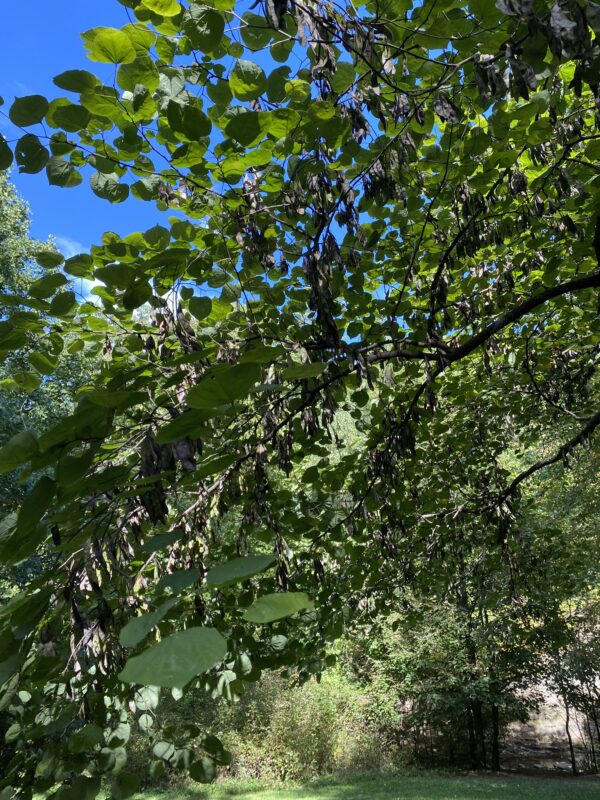Glen Echo Park
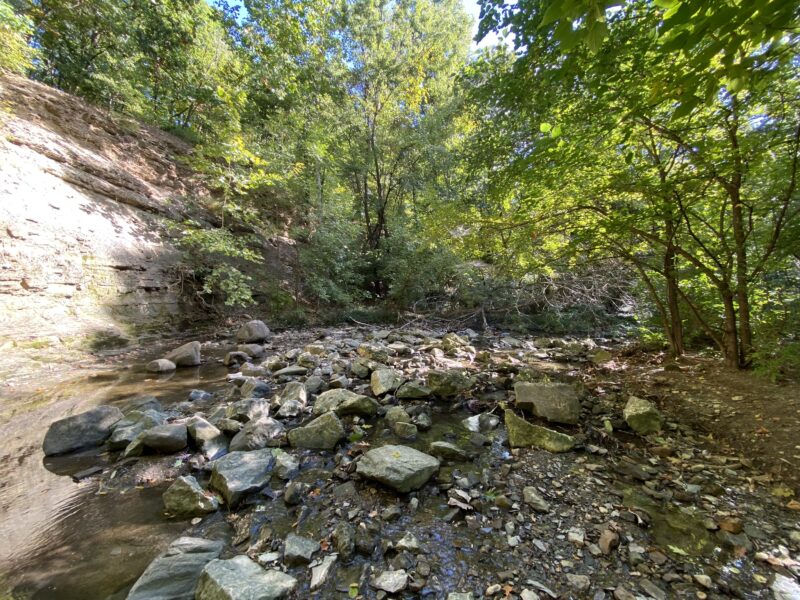
Glen Echo Ravine
Part 1: Twenty Species
Below is a list of 20 species that can be found at Glen Echo Park in addition to their CC values:
- Gray dogwood, Cornus racemosa (1)
- White snakeroot, Ageratina altissima (6)
- Common hackberry, Celtis occidentalis (4)
- Broad-leafed goldenrod, Solidago flexicaulis (5)
- Fragrant sumac, Rhus aromatica (3)
- America hophornbeam, Ostrya virginiana (5)
- Slippery elm, Ulmus rubra (3)
- Sugar maple, Acer saccharum (5)
- Moonseed, Menispermum canadense (5)
- Northern spice bush, Lindera benzoin (5)
- Western poison ivy, Toxicodendron rydbergii (3)
- Swamp white oak, Quercus bicolor (7)
- Canada clearweed, Pilea pumila (2)
- Tulip tree, Liriodendron tulipifera (6)
- Eastern hemlock, Tsuga canadensis (8)
- Eastern redbud, Cercis canadensis (3)
- River birch, Betula nigra (9)
- Southern arrowwood, Viburnum dentatum (2)
- Calico aster, Symphyotrichum lateriflorum (2)
- Red mulberry, Morus rubra (7)
I = (CC i )/%(N native)
I = 91/20
I = 4.55
Part 2: Highest and Lowest CC Values
Four of the Highest CC Values
River birch, Betula nigra (9): The river birch grows naturally along riverbanks and thrives as a landscape tree across the United States. It possesses cinnamon-colored bark that peels and curls, has leaves that are alternate and double-toothed, and grows in an oval shape. It is very tolerant of wetness and somewhat resistant to drought and birch borer (https://www.arborday.org/trees/treeguide/treedetail.cfm?itemID=792).
River birch’s high CC value can be attributed to its preference for wet soils. Though it can survive in other environments, it prefers soils that are along riverbanks.
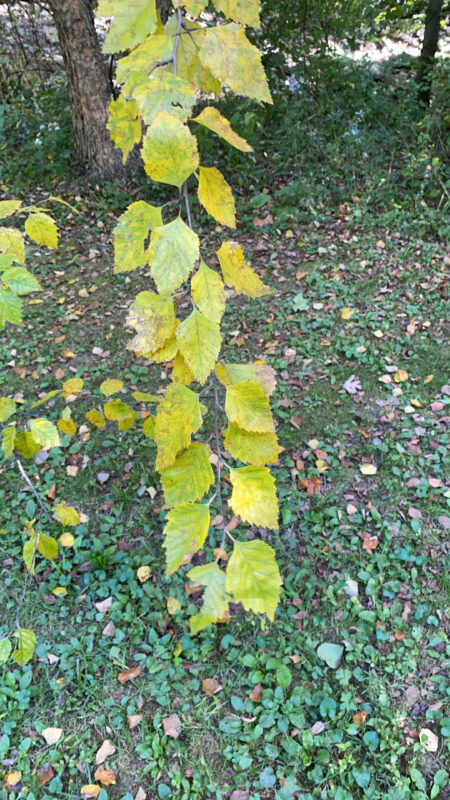
Eastern hemlock, Tsuga canadensis (8): The Eastern hemlock is a coniferous tree species native to the eastern United States. It’s had many human uses throughout the centuries. For example, the bark was widely used to tan hides. Additionally, the bark and twig tips can be used to steep a tea that can help soothe a variety of ailments. Today, this species is often planted for shade cover or as an ornamental (https://www.lakeforest.edu/academics/majors-and-minors/environmental-studies/tsuga-canadensis-(eastern-hemlock)-pinaceae#:~:text=Fun%20Facts%3A,forests%20throughout%20the%20eastern%20U.S.).
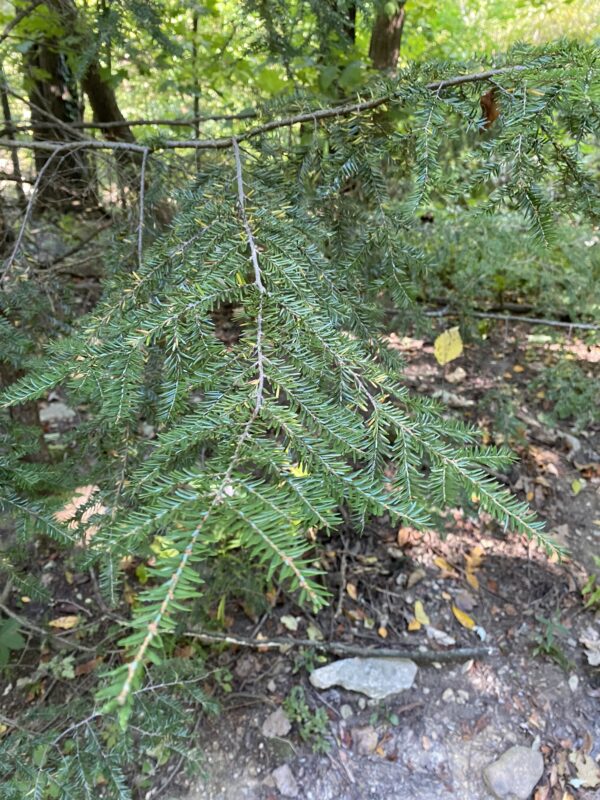
Red mulberry, Morus rubra (7): Red mulberry has a reddish brow bark with broad ridges. The leaves are alternate, simple and unlobed or mitten-shaped. They are rough and hairy above with soft hairs below. This species was first described in 1753 and makes a good shade tree (https://www.nrcs.usda.gov/Internet/FSE_PLANTMATERIALS/publications/lapmcbr7910.pdf).
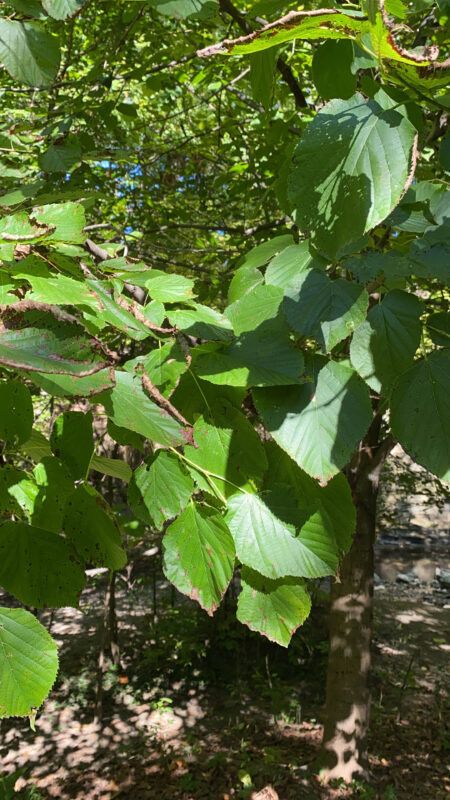
Swamp white oak, Quercus bicolor (7): This species also makes a great shade tree and can live more than 300 years. Full sun is the ideal condition for this tree. It possesses dark green leaves with a leathery texture and oblong acorns in pairs (https://www.arborday.org/trees/treeguide/TreeDetail.cfm?ItemID=2454).
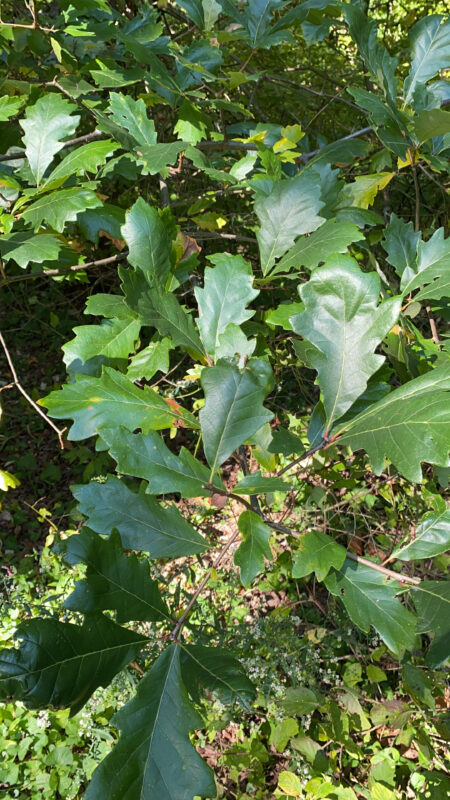
Four of the Lowest CC Values
Gray dogwood, Cornus racemosa (1): This species is a shrub with white berries that attract birds during the late summer. It can be identified by reddish-pink stems that persist year-round. Additionally, it has green to dark green leaves that are ovulate in shape. This species is often used for borders, groups and masses (https://www.arborday.org/trees/treeguide/TreeDetail.cfm?ItemID=829).
Gray dogwoods are a particularly tolerant species. They can adapt to a wide variety of soil conditions, even tolerating both saturation and drought. Therefore, it possesses a low CC value of 1.
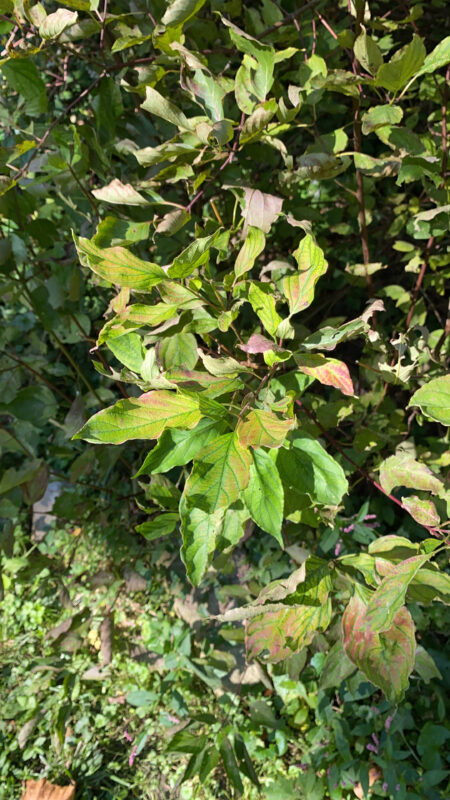
Southern arrowwood, Viburnum dentatum (2): This is a native shrub with shiny dark green simple leaves arranged oppositely. It prefers moist soul that is acidic. Southern arrowwood has a particular value to native bees (specifically bumble bees) during the early summer because of its white flowers (https://www.wildflower.org/plants/result.php?id_plant=vide).
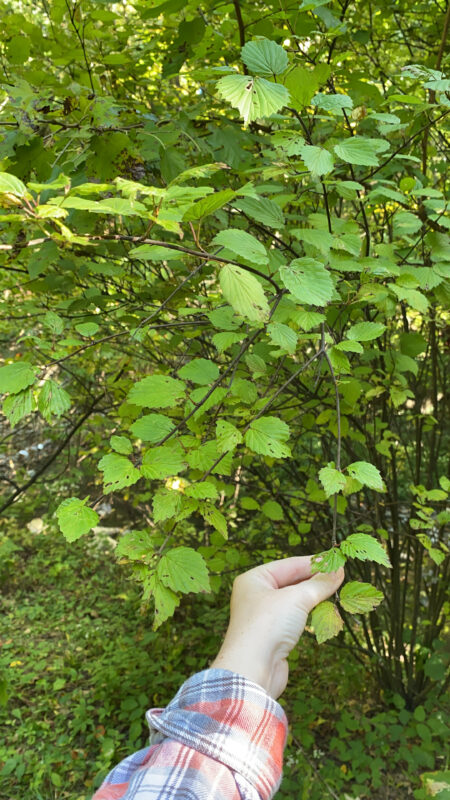
Calico aster, Symphyotrichum lateriflorum (2): Calico aster has erect stems that are green to brow with lateral braching and hairs. The tiny white blossoms are arranged upright in clusters. They have white rays with yellow centers. A unique characteristic of this species is that it does particularly well in disturbed soils (https://gardenerspath.com/plants/flowers/grow-calico-aster/#:~:text=Also%20known%20as%20white%20woodland,and%20hairy%2C%20with%20lateral%20branching.).
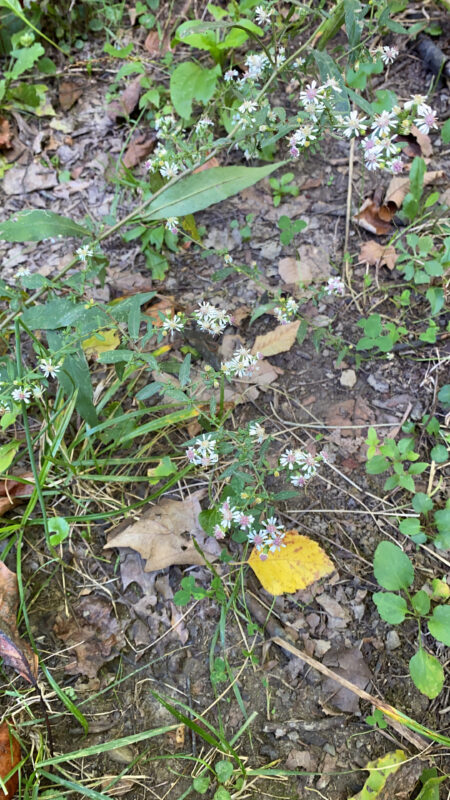
Canada clearweed, Pilea pumila (2): This species grows 1/2-2 inches tall with smooth, translucent stems ad opposite leaves. The leaves are hairless and coarsely serrated. Canada clearweed can withstand most disease and even temporary standing water. This plant is wind pollinated and therefore does not attract insects (https://www.illinoiswildflowers.info/woodland/plants/clearweed.htm).
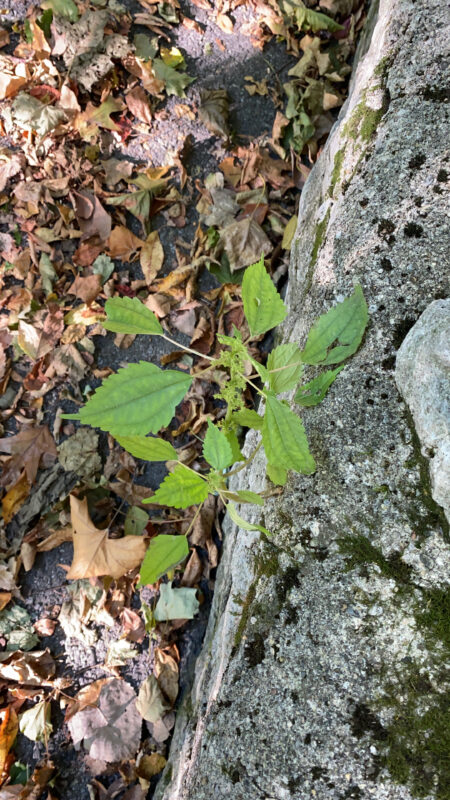
Part 3: Four Invasive Species
Common buckthorn (Rhamnus cathartica): This is a non-native woody shrub that was introduced to North America from Eurasia as an ornamental plant. It has smooth, deeply veined oval leaves with toothed margins. The fruits are black and flowers are yellow. Common buckthorn, as well as other buckthorns, are aggressive invaders due to their rapid growth rates and extensive root systems (https://indiananativeplants.org/wp-content/uploads/Ohio_common_buckthorn_invasivefactsheet2.pdf).
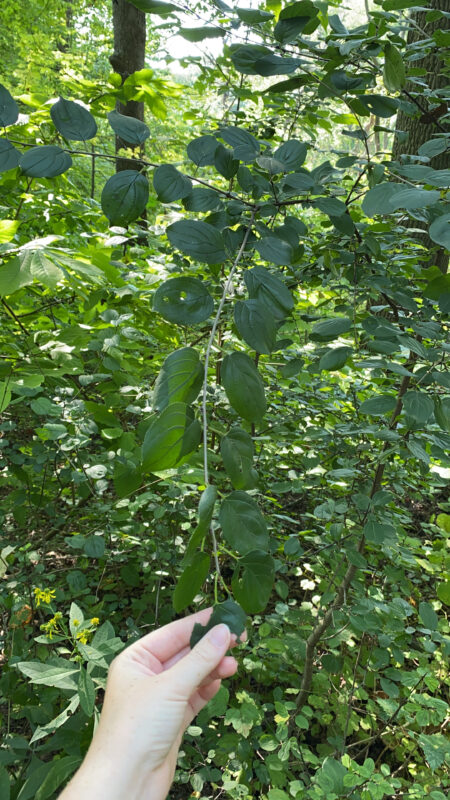
Amur honeysuckle (Lonicera maackii): This species is another shrub that was introduced to North America as an ornamental. It first arrived to New York in 1898 through the Botanical Garden. It was first plated for erosion control and wildlife cover, but has since taken over and become an aggressive invader. The leaves are opposite with a pale green color. Amur honeysuckle produces white flowers and reddish orange berries during the late summer (https://www.invasive.org/alien/pubs/midatlantic/loma.htm).
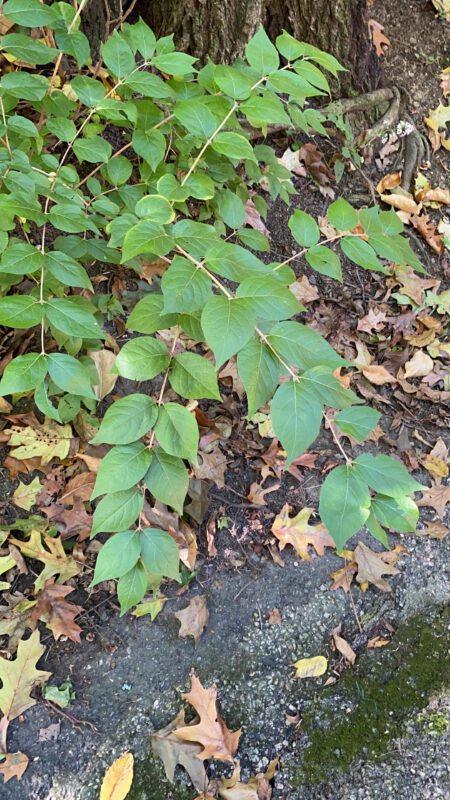
Multiflora rose (Rosa multiflora): This plant was the bane of my existence while working for the Ohio Division of Wildlife this summer! It has a thin stalk with minute razor-sharp thorns that can easily ruin clothing should you find yourself caught in it. The leaves are opposite and serrated, the flowers are white with a yellow center. This shrub is native to China, Japan, and Korea and has aggressively taken over forest floors in the United States since introduced in the 1860s (https://www.ecolandscaping.org/07/landscape-challenges/invasive-plants/multiflora-rose-an-exotic-invasive-plant-fact-sheet/).
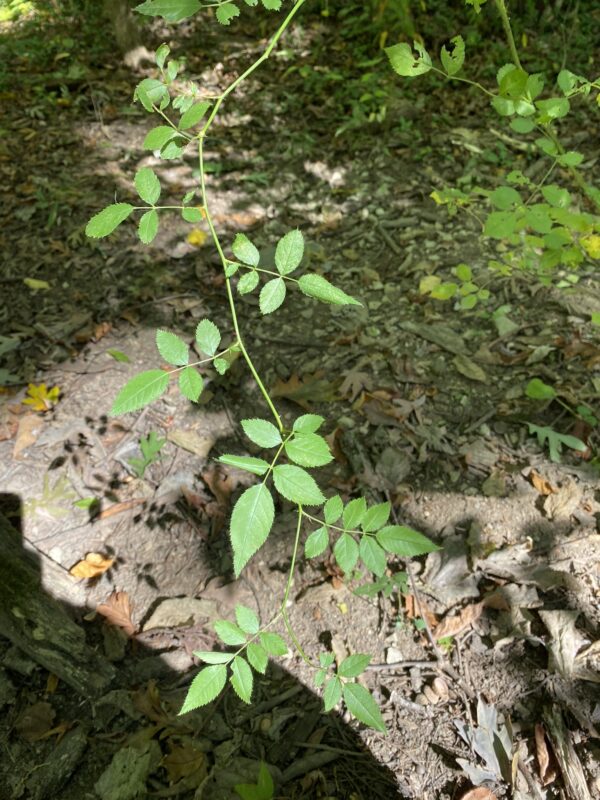
Fortune’s spindle (Euonymus fortunei): Fortune’s spindle, or winter creeper, is another highly invasive plant that came to the U.S. from its native east Asian habitat. It is a broadleaf semi-evergreen vine that creeps along the ground and climbs up trees. It can have reddish orange berries in the fall and greenish-white flowers. This species is a huge threat to native trees, especially in urban areas, because it can choke them out and cause death (https://www.fallschurchva.gov/DocumentCenter/View/14149/2020-12-Winter-Creeper-Flyer-FCHRT#:~:text=Euonymus%20fortunei%2C%20known%20as%20Fortune’s,to%20the%20U.S.%20in%201907.).
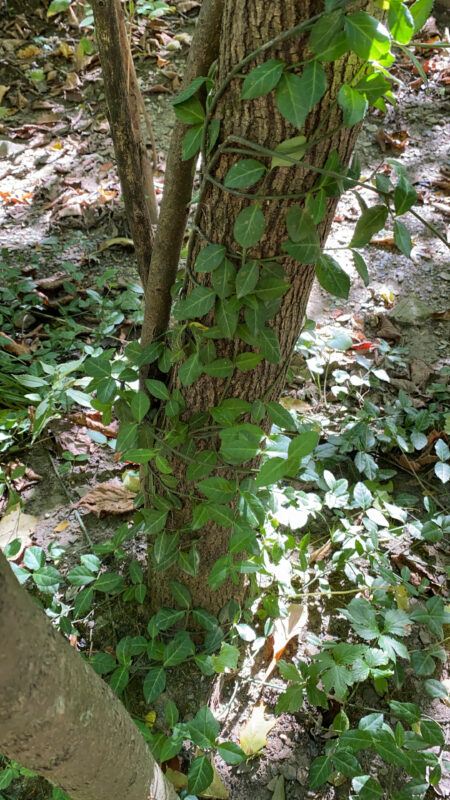
Part 4: Four Geobotany Species
Jane Forsyth describes the part of Ohio west of the glacial boundary as having limestone or high-lime substrates, which is where Columbus lies. The plants I found at Glen Echo most fell within this category, therefore I agree with Forsyth’s assessment of soil composition and associated plants.
Fragrant sumac (Rhus aromatica): Associated with limestone or high-lime substrates. This species is a deciduous shrub that grows between 6-12ft fall. The leaves are trifoliate with a glossy, blue-green appearance. They turn orange, purple, yellow and red in the fall. Its dark red berries are an important food source for wildlife.
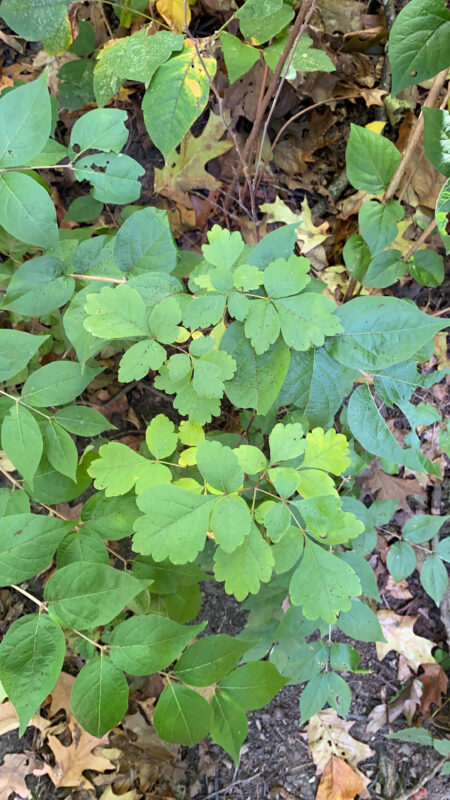
Common hackberry (Celtis occidentalis): Associated with limestone or high-lime substrates. Common hackberry possesses splotchy leaves with toothed margins and an asymmetrical base. They are easily identifiable by the light green color and yellow splotches. Another distinguishing feature of hackberry is the grey, warty bark that looks like dripping candlewax.
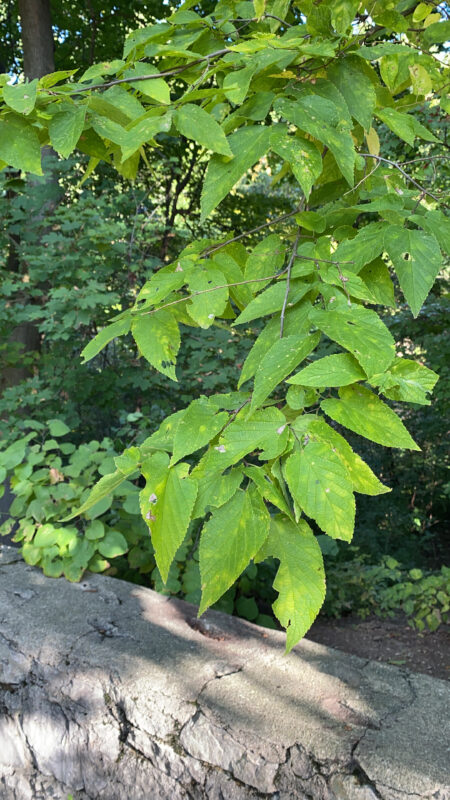
America hophornbeam (Ostrya virginiana): Associated with limestone or high-lime substrates. This species has alternate, simple leaves that are dark green above and paler below. They also have a texture similar to felt. American hophornbeam produces catkin fruits in pale green, papery capsules. These fruits are an important food source for wildlife including grouse, deer, rabbit and turkey.
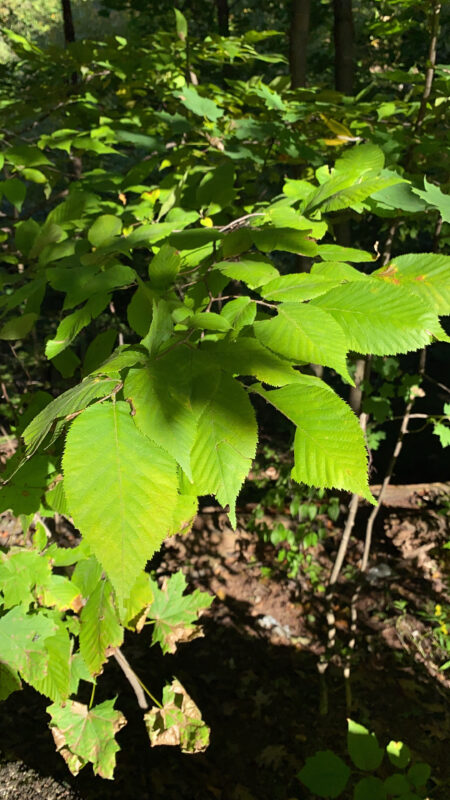
Eastern redbud (Cercis canadensis): Associated with limestone or high-lime substrates. Redbuds have heart-shaped leaves that are easily distinguishable. An even more identifiable feature are the brown legume fruit bean pods that can be seen hanging down from the branches in this photo.
